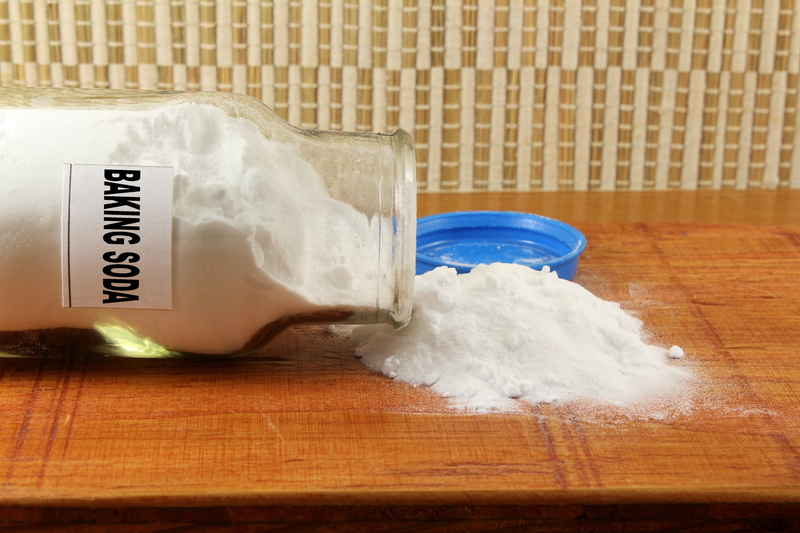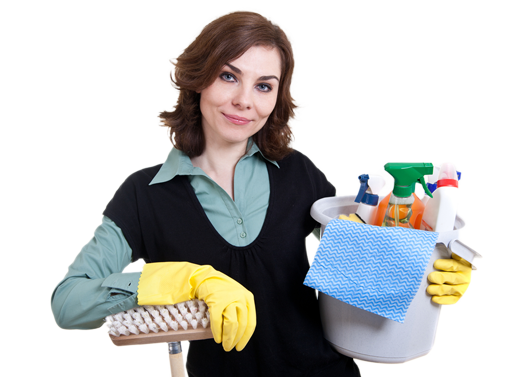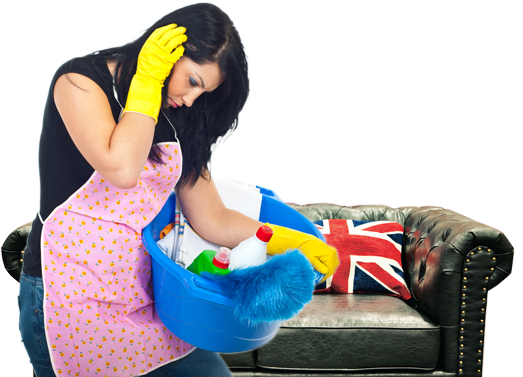Breathing New Life: Removing Damp Smells with Ease
Posted on 20/09/2025
Breathing New Life: Removing Damp Smells with Ease
Have you noticed unpleasant, musty odors lingering in your home? That persistent, sour scent commonly referred to as "damp smell" not only reduces indoor comfort but also indicates the presence of underlying moisture problems. Fortunately, removing damp smells is achievable with the right strategies. This comprehensive guide will reveal causes, prevention tips, and effective methods to eliminate musty odors, giving your living space a fresh start.

Understanding the Origins of Damp Smell
Damp or musty smells in indoor environments are typically a result of excess moisture and poor ventilation. Before you can effectively remove these odors, it's crucial to identify their root causes:
- Mold and Mildew Growth: Microscopic fungi thrive in moist, dark spaces, producing a musty aroma as they digest organic material.
- Water Leaks: Hidden plumbing leaks, roof damage, or rising dampness from the ground can saturate walls, floors, or ceilings.
- Poor Air Circulation: Spaces without adequate air flow trap humidity, fostering an environment for odors to develop.
- Condensation: High humidity, combined with cold surfaces, leads to water droplets forming and soaking structural elements or furnishings.
- Lack of Sunlight: Areas like basements, cellars, or windowless rooms commonly collect dampness and corresponding smells.
By identifying the source, you can effectively target and remove the causes--ensuring a more fragrant, healthier home.
How Damp Smells Affect Your Home and Health
A damp, musty odor is more than just a nuisance. It can have notable impacts:
- Triggers Allergies and Respiratory Issues: Mold spores may exacerbate asthma and allergies.
- Damages Property: Persistent damp can rot wood, peel wallpaper, and corrode metal fixtures.
- Reduces Comfort and Market Value: Homes with bad odors are less inviting and may fetch lower prices.
Prompt action is essential to restore freshness and protect both your investment and well-being.
Step-by-Step Guide: Removing Damp Smells from Your Home
Ready to banish that musty scent once and for all? Follow this comprehensive process for removing damp smells with ease:
1. Locate the Source of Moisture
- Inspect basements, crawl spaces, bathrooms, and attics.
- Look for visible signs like water stains, peeling paint, or condensation.
- Use a moisture meter for hard-to-spot leaks.
2. Eliminate the Moisture Problem
- Fix Plumbing or Structural Leaks: Repair leaking pipes, damaged roofing, or faulty gutters immediately.
- Improve Drainage: Ensure exterior drains direct water away from foundations.
- Seal Cracks and Gaps: Apply waterproof sealants to vulnerable areas.
3. Dry Out the Area Thoroughly
- Open windows and doors to promote cross-ventilation.
- Use fans, dehumidifiers, and heaters as necessary.
- Remove and air out affected furniture or fabrics outdoors in sunlight.
4. Clean and Disinfect All Surfaces
- Scrub away visible mold or mildew: Use commercial fungicides or homemade solutions (vinegar, baking soda, or hydrogen peroxide--never bleach on porous surfaces).
- Treat carpets and upholstery: Hire professional cleaners if necessary.
5. Remove Odors with Natural Deodorizers
- Baking Soda: Sprinkle over carpets or fabric and vacuum after a few hours.
- White Vinegar: Place bowls around the room or mist lightly with a spray bottle (ensure no vinegar-sensitive surfaces nearby).
- Activated Charcoal: Absorbs both moisture and odors over time.
- Coffee Grounds or Citrus Peels: These natural options can mask odors and add a pleasant scent.
6. Enhance Air Circulation and Ventilation
- Install extractor fans in kitchens, bathrooms, and laundry rooms.
- Consider a whole-house dehumidifier in humid climates.
- Use air purifiers with HEPA and carbon filters.
7. Regular Maintenance to Prevent a Return
- Check for and address leaks promptly.
- Clean gutters and downspouts regularly.
- Maintain low indoor humidity (ideally between 30-50%).
- Continue routine cleaning with natural deodorizers.
Treating Damp Smells in Specific Locations
Removing Damp Smells from Carpets and Rugs
- Vacuum the area thoroughly to remove loose debris or dust.
- Apply baking soda and allow it to sit for several hours, then vacuum again.
- Treat with a steam cleaner or call a professional if odors persist.
- Dry the carpet fully afterwards--avoid walking on it until completely dry.
Eliminating Damp Odor from Clothing and Fabrics
- Launder with hot water (if fabric allows) and add a cup of white vinegar to the cycle.
- Dry items outdoors in sunlight when possible, as UV rays help kill bacteria and mold spores.
- Repeat if necessary until odors disappear.
Banishing Musty Smells from Basements and Cellars
- Install a high-capacity dehumidifier to maintain optimal humidity.
- Treat walls and floors with anti-mold paint or sealers.
- Ensure adequate ventilation--window vents, fans, or air bricks can help.
- Monitor regularly for water ingress or leaks.
Natural Remedies for Removing Damp Smells
For those preferring eco-friendly solutions, these natural methods offer remarkable results for removing damp smells:
- Baking Soda: Its porous nature makes it superb at absorbing odors. Simply leave bowls of baking soda in affected rooms and replace weekly.
- Essential Oils: Add a few drops of eucalyptus, tea tree, or lavender oil to cleaning water or use in a diffuser to neutralize odors.
- Vinegar: Mix equal parts vinegar and water for cleaning surfaces and deodorizing the air.
- Lemon Juice: The natural acidity and scent of lemons combat bacteria and mask musty smells effectively.
Using these methods alongside thorough drying and cleaning can help maintain a fresh home, free from damp smells.
How to Prevent Damp Smells from Returning
Prevention is the most effective strategy to keep your home smelling fresh year-round. Incorporate these best practices for long-term success:
- Ensure regular ventilation by airing out rooms, especially after showers or cooking.
- Control humidity using dehumidifiers in damp-prone areas.
- Fix leaks--inspect bathroom, kitchen, roof, and basements at least annually.
- Clean regularly to remove dust, mold spores, and bacteria.
- Use moisture-absorbing crystals or packs in wardrobes, storage rooms, and laundry spaces.
When to Call a Professional
Sometimes, damp smells indicate persistent, serious issues. **Call in a specialist** if:
- Mold keeps returning despite cleaning.
- You suspect structural damage--such as subsidence or rotten beams.
- Allergy or respiratory symptoms worsen when at home.
- There are large-scale leaks, flooding, or severe water damage.
Qualified professionals can perform mold remediation, advanced drying, and waterproofing to protect your property for the long term.

Frequently Asked Questions About Damp and Musty Smells
Why does my home keep smelling musty after cleaning?
Persistent musty odors are often due to hidden moisture sources, such as wall cavities or under floors. Identifying and eliminating the underlying cause is crucial, not just masking the smell or surface cleaning.
Are dehumidifiers effective for removing damp smells?
Yes! Dehumidifiers lower indoor humidity, making it hard for mold or mildew to thrive. Running a dehumidifier in problem areas is one of the most effective long-term solutions.
Can damp smells cause health issues?
Poor indoor air quality triggered by dampness and mold spores can lead to allergies, breathing problems, and skin irritations. Vulnerable populations include young children, the elderly, and those with compromised immunity.
How long does it take for a damp smell to go away?
With correct treatment--thorough drying, cleaning, and ventilating--most smells dissipate within days. Lingering odors signal that moisture or mold may still be present.
Final Thoughts: Breathing Easy in a Fresh, Healthy Home
Removing damp smells is about more than just a pleasant fragrance. It's a sign your home is dry, healthy, and inviting. By identifying sources, acting swiftly, and applying both natural and professional remedies, you reclaim your space from foul odors.
Remember: prevention is the best cure. With regular maintenance and vigilance, you'll ensure that fresh, clean air fills every corner of your home. Breathe new life into your living environment today!
```




